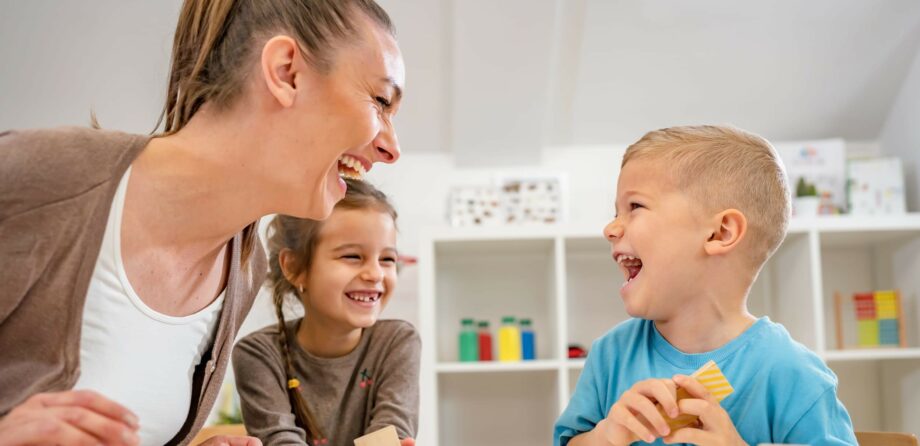
Promoting Positive Behaviour Strategies in Early Years
How your nursery environment can help to promote positive behaviour
Experienced and skilled early years practitioners working in a nursery can have a hugely positive impact on a child’s behaviour. Nursery practitioners know that behaviour is a form of communication and they understand that many things can affect a child’s behaviour.
Top tip 1: Promoting positive behaviour begins with your environment
Having a positive, proactive approach to behaviour begins with your environment. The physical space in the nursery, lighting, sound and noise, colour schemes, social aspects, cultural aspects, accessible resources and your staff team – all of these can have an effect on children’s behaviour.
Top tip 2: Consider all your spaces in the nursery
As a first step, you should review all the different spaces you have available to children and observe how they are being used. You might light to ask yourself questions, such as: Are there any hotspots that cause conflict? Why might this be so? Do you have a range of spaces to meet children’s interests and current stages of play? Look at how social interactions happen and review the opportunities children have to play in various social groups – solitary, pairs, small or large groups. Consider the opportunities children have to be physically active throughout the day and how they can take time out to rest, relax and be calm.
Top tip 3: review how your resources can influence behaviour
We recommend you review whether there are enough age and stage appropriate resources on offer to meet the children’s needs and avoid potential conflict. Think about how these resources are presented, is there enough space to use the resources in the place they have been put? Is there enough to share? Can children move the resources to follow their play?
Top tip 4: routines are important
The nursery’s daily routines should be flexible to give autonomy to children’s play choices. This will allow them to follow their interests and curiosities and lead their own learning experiences.
Top tip 5: Set rules, boundaries and expectations
Where appropriate, work with children to set the rules or boundaries for your environment. Think about the language you use and try to use positive phrasing. For example, rather than saying ‘don’t run indoors,’ try using ‘we walk indoors’. Share a copy of your rules, expectations and boundaries with your parents so they can understand your approach. It can be very confusing for children to have different or inconsistent rules so ensure all staff are clear about the setting’s boundaries and that all staff are consistent in their responses.
Top tip 6: consider transitions
Do you have strategies to help children with both planned and unplanned transitions? Think about how you support children in your daily routine to prepare for a change in activities, mealtimes, or preparation to go home. Reflect on the support you put in place for unplanned transitions, such as a child’s best friend being away or the key person being absent through illness.
Top tip 7: Make sure mealtimes are a positive experience
Are your mealtimes relaxed and fun? Do adults sit with children to offer support and social conversations? Involve children in the mealtime routines, such as when setting tables or clearing away dishes. Avoid long periods of children sitting down waiting. Plan your mealtimes so children sit at tables as the food is ready. Adults should sit with the children to engage in social conversations and set a good example.
Top tip 8: Positive feedback
Consider reward systems – positive feedback is the best and most effective way to promote positive behaviour. Review any reward scheme you are using and consider if they are age appropriate and meaningful to the children. Rewards should be inclusive to all children.
Top tip 9: Make sure staff have a consistent approach to promoting positive behaviour
Are staff empathetic and do they take opportunities to talk about feelings with children? Do staff understand how to support children with their strong emotions? Do you have strategies for helping children to calm themselves? Do all staff consistently apply your rules/boundaries? Environments do not only influence a child’s behaviour. They also influence the adult’s behaviour. Our environments are like frames for experiences and depending on the frame, we alter our behaviour.
Top tip 10: regularly review your environment
Be proactive with regular reviews of your environment so you can prevent or minimise issues from occurring. Your environment needs to be set up in ways that best suit the stages of development for all of the children using the space.
More support
We hope you found NDNA’s top tips on promoting positive behaviour through the nursery environment useful.
You can read more about strategies to help with children’s behaviour in our factsheet, Promoting Positive Behaviour for nurseries, which is free for NDNA members.
You can also access our free parent factsheet on positive behaviour to share with your families.
To improve your staff members’ skills and knowledge on all aspects of behaviour, try NDNA’s online course, Promoting Positive Behaviour.


